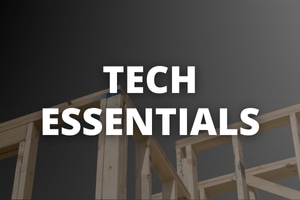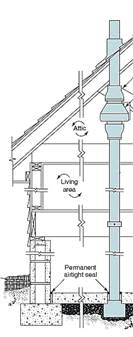Member Knowledge Centre
 member Knowledge centre
member Knowledge centre
The Knowledge Centre provides CHBA members with access to information and resources. It is a growing resource that is currently focused on updating members about national building code information. Please note that this information is a benefit of your membership, and should not be shared beyond your company/organization.
You can browse the items below, filter by category, or enter search terms in the "What are you looking for" box below.
Radon in Homes

Radon in Homes
October 10. 2025
Radon in Homes
Radon is a naturally occurring radioactive gas produced during the breakdown of uranium in rocks and soil found across Canada. Radon escapes from the ground and gets into the air we breathe and can accumulate to high levels indoors. The radon concentration in a home depends on various factors including geology below a home and the ventilation and the airtightness of a home. According to Health Canada, radon is the second leading cause of lung cancer after smoking in Canada and it is recommended all homes be tested regardless of location.
What Can a Builder or Renovator do to Minimize the Ingress of Radon into Homes?
A builder’s goal should be to minimize radon ingress into new homes from the ground and to facilitate future radon mitigation in case testing by the homeowner finds the radon levels to be above the Canadian radon guideline level of 200 Becquerel per m³ (Bq/m3).
A renovator’s goal should be to inform the homeowner of the risk of radon ingress and recommend testing. Ideally, before and after renovations that impact the slab or basement, the airtightness and ventilation of a home, any structural changes, or earthworks next to the home. Pre-renovation testing allows for mitigation strategies to be included in those renovations. After the renovations, homeowners should monitor that radon levels stay below the Canadian guideline.
Technical Concepts:
|
|
| |
What does the National Building Code (NBC) say about radon?
Since the 2010 edition, the NBC has required basic measures facilitating future radon mitigation – gravel and a soil gas barrier below the basement slab sealed to the foundation, and a pipe stub open to the sub-slab space allowing connection to a future radon mitigation pipe – as well as sealed sump pits. A more performance-based approach also permits other material choices.
The 2025 NBC will require all new houses and Part 9 care homes to have a full-length passive radon stack to lower radon levels, installed prior to occupancy. All overlapping joints in the polyethylene will also need to be sealed at overlaps and across the floor to wall joint at the foundation.
How do I know what the levels are in a home or my region?
The only way to know what the radon levels are in a home is to carry out post-occupancy testing and the levels can vary between two adjacent homes. The latest information on average radon levels in each region can be found in the 2024 Cross-Canada Radon Survey. Some regions are known to have higher levels than others.
Where can I find more information?
Best practice requirements for both new and existing homes can found in the 2024 versions of two standards published by the Canadian General Standards Board (CGSB)
- CGSB 149.11 Radon control options for new buildings and
- CGSB 149.12 Radon mitigation options for existing buildings
Health Canada’s Technical information on radon includes
- the ‘Radon Guideline’ for new and existing homes and other helpful resources such as the ‘Guide for radon measurements in homes’
CHBA’s Renovators Manual, provides guidance on reducing radon ingress in chapter 14.6.
The Canadian National Radon Proficiency Program (C-NRPP) trains and certifies Radon Measurement & Mitigation Professionals and hosts a list of recommended consumer and professional measurement test devices. C-NRPP also offer courses aimed at builders and trades involved in new home construction.
Our research on radon - National Research Council Canada describes ongoing radon field and lab studies being conducted to help inform the work of committees developing codes and standards.
Additional Info
Download File : 2025-10-10 Tech Essential Radon_final.pdf


